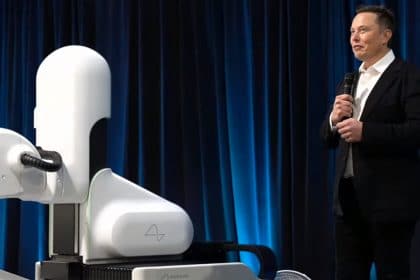According to Elon Musk, the main goal of his Nueralink company is to make an incredibly powerful brain-machine interface, a device with the power to handle lots of data that can be inserted in a relatively simple surgery.
At a Friday event, Tesla Inc (NASDAQ: TSLA) CEO Elon Musk revealed more details about his neuroscience startup Neuralink and its plans to connect computers to human brains. During the presentation, Musk showed his second version of a small, robotic device that through the tiny electrode threads is connecting to the skull and with the brain. Musk explained this as “neurons firing in real-time. The matrix in the matrix.”
At the event, Musk showed off several pigs that had prototypes of the neural links implanted in their head, and machinery that was tracking those pigs’ brain activity in real-time. In the meantime, he also confirmed that the Food and Drug Administration (FDA) had awarded the company a breakthrough device authorization, which can help expedite research on a medical device.
With Neuralink Musk Wants to Help People with Health Conditions
According to his own words, the main goal of his company is to make an incredibly powerful brain-machine interface, a device with the power to handle lots of data that can be inserted in a relatively simple surgery. Its short-term goal is to build a device that can help people with specific health conditions as are seizures, paralysis, brain damage, and depression.
Musk stated:
“These can all be solved with an implantable neural link. The neurons are like wiring, and you kind of need an electronic thing to solve an electronic problem.”
Founded in 2016, Neuralink is a neuroscience technology company focused on building systems with super-thin threads that carry electrodes. When implanted into a brain, these threads would form a high-capacity channel for a computer to communicate with the brain, a system supposed to be much more powerful than the existing brain-machine interfaces being researched.
Inserting these wires is still a problem though. Neuralink actually developed a tiny robot that connects the electrode to humans through surgery without general anesthesia in a single-day hospital stay.
Nolan Williams, the director of Stanford’s Brain Stimulation Lab said:
“We’ve been connecting forms of computers to brains for 20 or 30 years already. The brain itself uses certain frequencies and certain kinds of electrical thresholding to communicate with itself. Your brain is a series of circuits that kind of intercommunicate and communicate between themselves.”
As the focus of Friday’s event, Musk showed what the second generation of what that robot will look like: a large white structure with five degrees of freedom.
Surgically Inserted but Completely Safe?
Afshin Mehin, a designer and founder of the firm Woke, which worked on its outer device that holds the needle explained that the robot is a super complicated, highly-precise machine which is “able to both capture your brain and then with almost a sewing machine-like, micro-precise needle and thread place the neural threads in the exact right location based on the surgeon decisions around what the safe locations are for the threads to be inserted.”
Musk added that last year, Neuralink reduced its plans for a wearable device that connects to the threads implanted in the user’s brain. While the first generation of this device would have been installed behind a person’s ear, the newest version is a small, coin-size device that would sit under the top of their skull.
“It’s kind of like a Fitbit in your skull with tiny wires,” explained Musk, who compared the device to a smartwatch. According to Stanford neurosurgery professor Maheen Adamson, the research is still in early stages and, as it proceeds, will most probably need focusing on how the technology can help people with specific, severe health conditions first.
The company also said it aims to enable people to “preserve and enhance” their brains and to “create a well-aligned future.” While that might not seem to be the exact need of an average person, it does fit into Musk’s long-standing worries regarding artificial intelligence. Just for reminder, Musk has been reiterating the technology could be more dangerous than nuclear weapons, and warned that AI could become too powerful, too quickly, preventing humans from keeping it in check.
Experienced creative professional focusing on financial and political analysis, editing daily newspapers and news sites, economical and political journalism, consulting, PR and Marketing. Teuta’s passion is to create new opportunities and bring people together.




